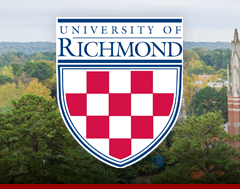Off-campus University of Richmond users: To download campus access theses, please use the following link to log in to our proxy server with your university username and password.
Date of Award
5-2025
Document Type
Restricted Thesis: Campus only access
Degree Name
Bachelor of Science
Department
Biochemistry & Molecular Biol.
First Advisor
Dr. Julie Pollock
Second Advisor
Dr. Michael Norris
Abstract
PhotoActivated ChemoTherapy (PACT) is a method that uses light to induce toxicity of druglike compounds in a selective manner. Cell viability of H23 non-small cell carcinoma was studied in this investigation to probe the cytotoxic profile of these compounds and the effects of light exposure on toxicity. The dose-response relationships found from these experiments suggest that ruthenium complexes can be successfully activated in cells to enhance cytotoxicity. Compounds that activate quicker through photolysis can exhibit a greater enhancement of cytotoxicity after light exposure. Lipid solubility is also associated with compounds that exert strong cytotoxic effects after activation. These trends support the application of ruthenium-based agents for PACT. Ruthenium compounds must be optimized for efficient photolysis and nearinfrared sensitization, cell entry, and the enhancement of cytotoxicity after light exposure. This study highlights how slight chemical differences can significantly change the ability of a compound to achieve these three goals and suggests value in optimizing these compounds to develop the field of targeted chemo oncology with PACT and photoactivated drug delivery
systems.
Recommended Citation
Wilson, Auden, "Ruthenium Complexes as Photoactivated Chemotherapy for the Treatment of Lung Cancer" (2025). Honors Theses. 1869.
https://scholarship.richmond.edu/honors-theses/1869
